Raleigh-Durham's African American Cultural Landscapes
Immediately following the Civil War, during the period known as Reconstruction (1865-1877), African American universities were established in many cities across the South, including the Raleigh-Durham region. Just south of Raleigh’s Capitol Square, Shaw University, founded in 1865, was the first historically Black college established in the United States after the Civil War. The school’s first structure, now called Tupper Memorial Baptist Church, served as both the academic and church building before Shaw Hall, named after the campus’ main benefactor, Elijah Shaw, was constructed in 1871. That same year, architect George S.H. Appleget designed Estey Hall, considered to be the first building in the United States constructed for the higher education of black women. Leonard Hall, designed by African American architect Gaston A. Edward and built in 1881, eventually housed the nation’s first four-year medical school for African Americans and is now listed in the National Register of Historic Places. A neighborhood called South Park soon developed around Shaw University. With its churches, stores, and other businesses, South Park became an enclave for a burgeoning African American middle-class during the early twentieth century. Larger residences were interspersed among tracts of shotgun-style houses (one story high, one room wide, and two-to-three rooms deep) on small lots that were built for working-class families.
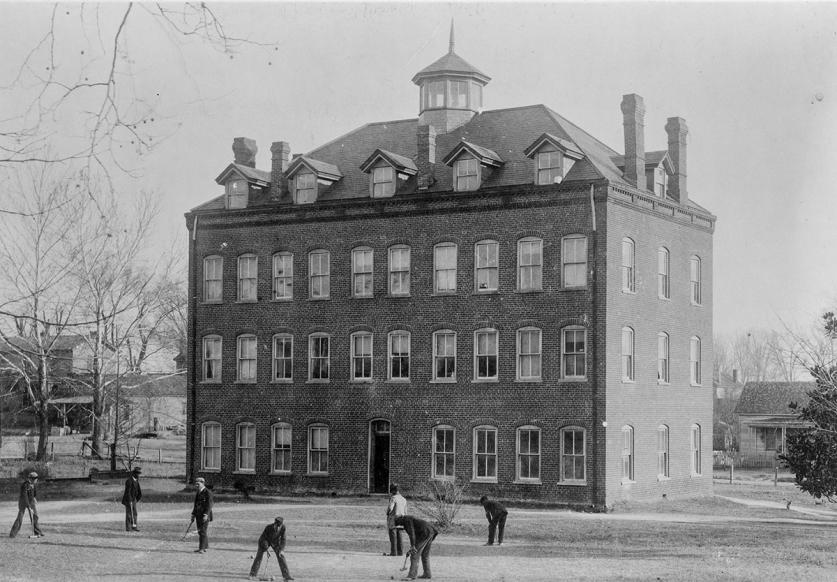
Another historically African American institution of learning, Saint Augustine’s Normal School (renamed St. Augustine’s University in 2012) was founded in 1867 east of Raleigh’s Capitol Square. The campus features several original buildings constructed of stone quarried by students. The cornerstone of the Gothic Revival-style St. Augustine’s Chapel was laid in 1895 under the guidance of Reverend Henry Beard Delany, the first African American bishop elected to the Episcopal Church and the first Bishop to graduate from college. The predominantly African American neighborhoods of College Park and Idlewild grew in proximity to the university and were characterized by modest, working-class houses on small lots. The lots that would compose Idlewild were first parceled out and sold in 1891, and by 1910, the area had become a vibrant neighborhood, with many residents owning their homes. College Park was subdivided in 1912 and was soon populated with houses in a variety of styles.
Just to the northwest of the Capitol and near the city’s center was the neighborhood known as Smoky Hollow (named for the smoke from trains, which setteld over this low-lying area), an industrial district of mills and machine shops that employed many African Americans. Bounded by Peace Street to the north, West Street to the west, North Street to the south, and Wilmington Street to the east, the district was home to three African American churches but was also racially diverse, as many Whites worked in the industrial sector as well.
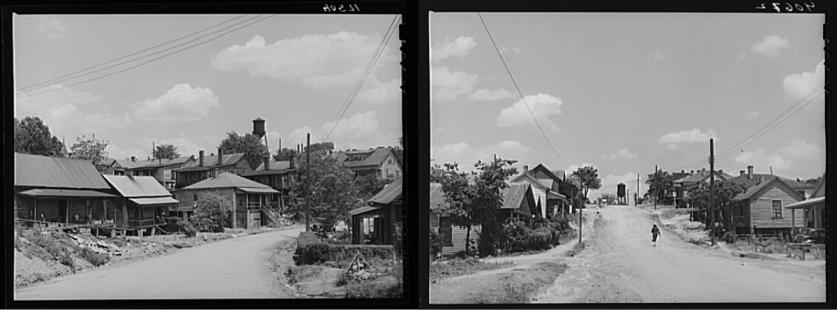
Increasingly Segregated Landscapes in the Jim Crow Era
While the diversification of North Carolina’s economy, which began in the 1900s, brought steady growth to Raleigh, the city became increasingly segregated as both laws and policies created ever sharper divisions along racial lines. Exclusively White suburbs, such as Oakwood, Glenwood, Boylan Heights, and Cameron Park, developed at the higher elevations to the north and west of the city center. Connected to the downtown by roads or streetcar lines, these neighborhoods prospered in the presence of extant natural features, including streams, rolling hills, valleys, and forested tracts.
Meanwhile, the growth of African American communities was largely confined to the city’s southeastern lowlands in and around the South Park and College Park neighborhoods. This division was reinforced by several common practices in housing, banking, and education. Restrictive covenants explicitly prevented African Americans from moving into the White suburban neighborhoods northwest of downtown, as owners of homes in those neighborhoods signed agreements, mandated by the terms of their initial purchase, that prevented the sale of property to African Americans. Many African Americans seeking to borrow money also experienced ‘redlining,’ a practice by which governmental agencies and banks classified most African Americans as high-risk borrowers, making them ineligible for the mortgages necessary to purchase homes in more expensive areas. Beginning in the 1920s, decisions by school boards would further exacerbate the racial divide in Raleigh, as new and better schools were built in the city’s northwest suburbs, while schools serving an African American middle class in the southeast suburbs were left to languish. This accelerated the process known as ‘White-flight,’ as Whites left what had been relatively integrated neighborhoods in the city center to the more segregated neighborhoods north and west of the Capitol. Ultimately, these same trends shifted the political and economic center of Raleigh to the northwest of the city as well, isolating the largely African American communities in the southeast.
It was also during this period that African American businesses were increasingly excluded from the downtown area. One notable exception was Hargett Street on the northern edge of Raleigh’s Moore Square. A section of Hargett Street between South Wilmington and South Blount Streets became known as “Black Main Street” during the 1920s and was home to nearly 50 African American-owned businesses at its height. Most of those businesses were, however, swept away under the banner of urban renewal in the 1960s.
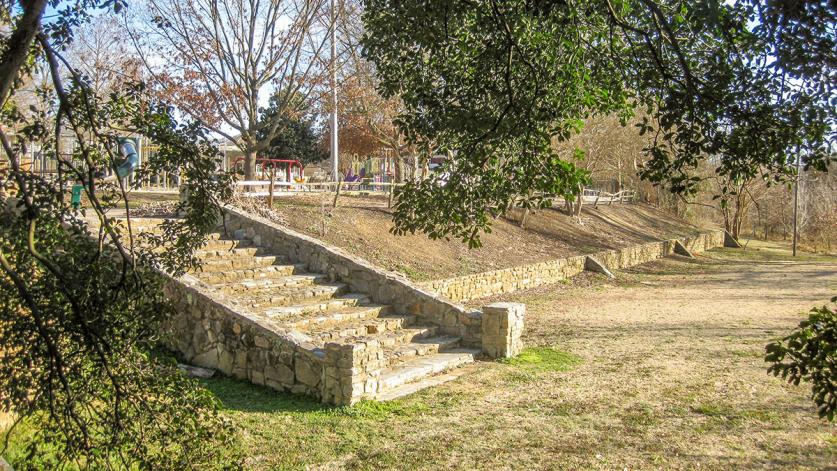
In addition to commercial districts and residential areas, segregation was also enforced in recreational facilities during the Jim Crow era. John Chavis Memorial Park, established in 1937 near Shaw University, was designated as the “separate but equal” counterpart to Pullen Park, which had been established east of Capitol Square in 1887. Designed by G. Robert Derick, a National Park Service landscape architect, John Chavis Memorial Park was constructed under the aegis of the Works Progress Administration (WPA) and was one of several segregated recreational facilities built in North Carolina with federal funding. This demonstrates the complicity of the federal government in the Jim Crow policies that were in force throughout the South. The park was listed in the National Register of Historic Places in 2016 and continues to be a focal point for the city’s African American community.
Another Depression-era WPA project was the Crabtree Creek Recreational Demonstration Area, which opened in northwest Raleigh to Whites only in the late 1930s. In 1950, the southern portion of this public park was designated a separate area for use by African Americans and renamed Reedy Creek State Park. The two parks were combined and integrated in 1966 as William B. Umstead State Park, which is today a large forested nature preserve.
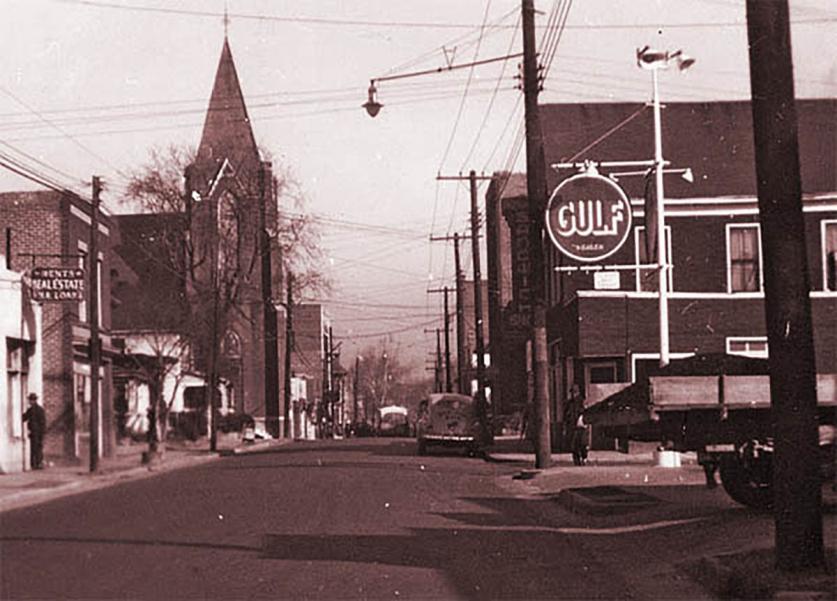
African American neighborhoods also began to take shape in the neighboring city of Durham during the Jim Crow era. The Hayti neighborhood, an enclave first formed by freedmen on the southern edge of the city, began to develop into a thriving African American business and residential district. The community grew around St. Joseph’s African Methodist Episcopal Church, established in 1891 (and now listed in the National Register of Historic Places) and was bordered by the four-block district on Parrish Street that would come to be known as “Black Wall Street,” a commercial district comprising, at its height, some 200 African American-owned businesses. W.E.B. Du Bois and Booker T. Washington visited Hayti in 1910 and 1911, respectively, both praising the community and nearby Parrish Street as models for African American neighborhoods. Present-day North Carolina Central University was established in Hayti in 1910 and became the first state-supported liberal arts college for African Americans in 1925.
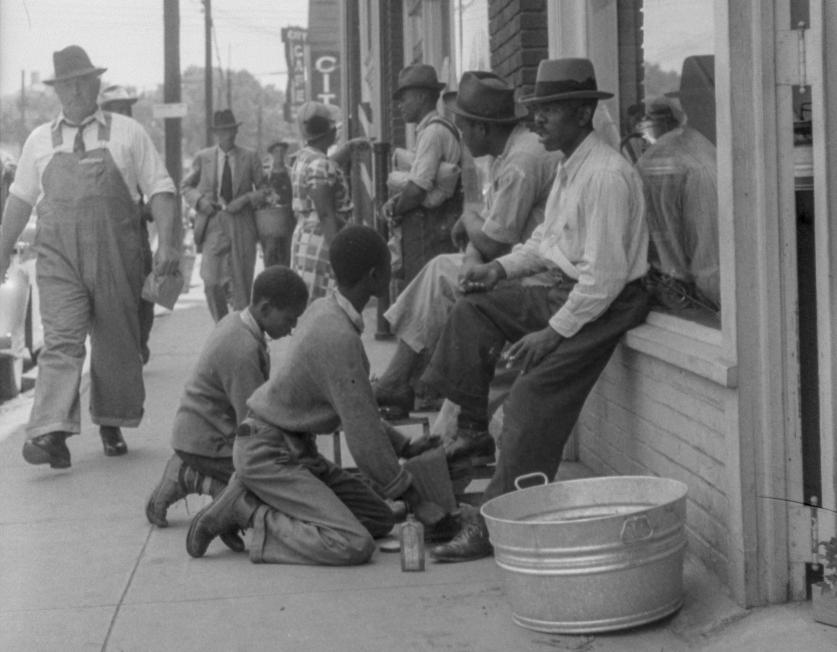
Post-World War II Developments and Urban Renewal
Like many cities across the United States, Raleigh experienced a housing boom after World War II. New, predominantly White suburban developments extended even farther northwest of downtown Raleigh, while African American development continued to be concentrated southeast of the city. At the same time, large-scale urban renewal projects led by the federal government had dramatic consequences for African American commercial and residential centers in the Raleigh-Durham region.
The Chavis Heights public housing complex was completed in 1940 on the site of Watson’s field in southeast Raleigh, just blocks from Shaw University and adjacent to John Chavis Memorial Park. The city’s first federally funded multi-family housing project, Chavis Heights was built on 14.6 acres to house nearly 300 African American families in parallel rows of barracks-like, two-story brick apartments extending southward from Lenoir Street. Green space was limited within the complex, although surrounding streets were lined with oak trees.
Located 1.5 miles southeast of downtown Raleigh, Rochester Heights was another housing development completed for African Americans during the period of segregation but was markedly different from Chavis Heights. The 39-acre development, built between 1957 and 1964, comprised single-family, ranch-style homes, most of which are still intact. Lots ranged in size from one-quarter to one-third of an acre, with houses set back from the street and fronted by lawns. The community was economically diverse and developed according to strict covenants that mandated lot sizes, setbacks, the placement of structures, and the style of buildings. The neighborhood’s streets were named for famous African Americans, including Cab Calloway, Ray Charles, and Pearl Bailey.
During the 1950s, Downtown Boulevard (now Capital Boulevard) was built to the west of the original Halifax Street in Raleigh, effectively realigning several streets and paving over parts of the Smoky Hollow neighborhood. The first section of what would become known as the “Beltline” (Interstate 440 and Interstate 40), the system of major highways that encircle Raleigh, was completed by 1960. Construction of these major arteries, combined with deferred maintenance of stormwater runoff systems, exacerbated the potential for Walnut Creek (south of downtown) and Crabtree Creek (to the east) to flood the adjacent, largely African American residential neighborhoods, including Rochester Heights. Other historic African American neighborhoods in Raleigh did not fare well. In 1974 the Raleigh Planning Department issued a report indicating that most of the city’s deteriorating and dilapidated housing was concentrated in the Idlewild and College Park communities. Around that same period, the theme of equity in urban planning was also examined by landscape architecture students at the North Carolina State University School of Design. Participating in a community-development workshop called the New Landscape, students attempted to solve problems facing Raleigh’s underserved neighborhoods in response to the city’s sizeable Africa American population “living in environmental despair.”
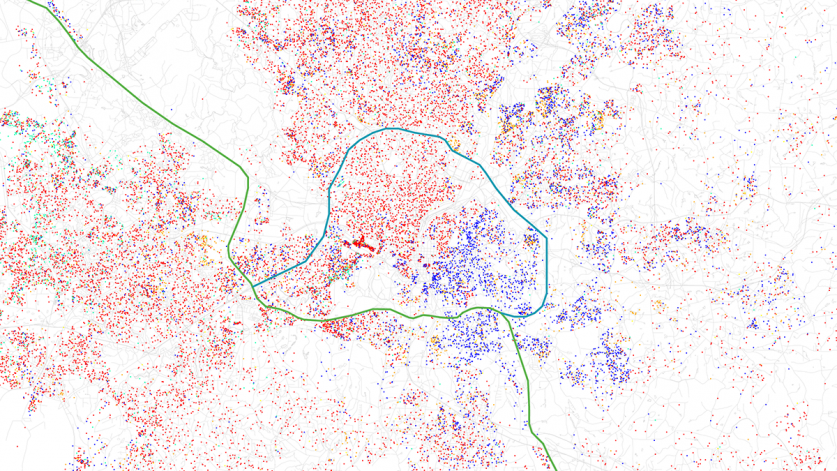
In nearby Durham, Parrish Street and the Hayti neighborhood were also impacted by the unintended consequences of urban renewal. Construction of the Durham Freeway (North Carolina 147) demolished nearly 200 acres of the Hayti neighborhood, essentially cutting it in two. Recently published research by Dr. Andrew Whittemore found that from 1945 to 1985, the pattern of ‘upzoning’ (rezoning parcels to heavy commercial or industrial uses) in Durham negatively impacted African American neighborhoods in particular. Other evidence also suggests that the racial topography that emerged in the Jim Crow era persists today. Software developer Eric Fischer has used data from the 2000 census to create maps of urban segregation in cities around the United States. Raleigh still evinced a notable racial divide, with African American populations concentrated in the low-lying, southeastern portions of the city.



